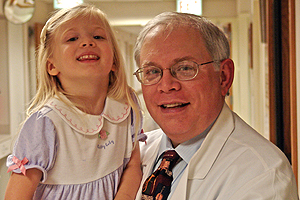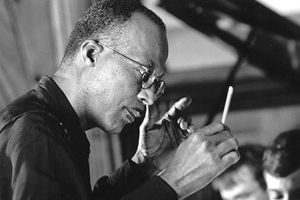Chicago In the News
The Chronicle’s biweekly column Chicago In the News offers a digest of commentary and quotations by a few of the University faculty members, students and alumni who have been headlining the news in recent weeks. Chicago faculty members are some of the most frequently quoted experts, so space allows publishing references to only selected examples. To read many of the full newspaper articles mentioned in this column, visit the In the News column at the University News Office Web site: http://www-news.uchicago.edu/.
Bringing health disparities to the forefront
Three University Professors were quoted in a feature article published in the Chicago Magazine’s October issue that reported on health disparities in Chicago. The article described how breast cancer is one the leading diseases that is widening the racial divide in health care in Chicago. African-American women are far more likely to die of breast cancer than white women, as they suffer from a much more aggressive type of breast cancer at younger ages. Marshall Chin, Associate Professor in General Internal Medicine, Monica Peek, Assistant Professor in General Internal Medicine, and Sarah Gehlert, Professor and Deputy Dean of Research in the School of Social Service Administration and Director of the Center for Interdisciplinary Health Disparities Research, were quoted in the article and spoke about the difficulties in turning this situation around. Chin said, “You’d be safer saying disparities in Chicago are comparable to those in other big cities. The point is that this is an unacceptable level.” Said Peek, “We’re hoping there’s a moral imperative—that we see the urgent state of affairs and do something about it. The question is, are people willing to do the right thing?” Gehlert, who has been directly involved in working with women on the South Side of Chicago to discover the causes of these disparities, pointed out the complexity of the problem. “I think the mistake we’ve made in health disparities is we’ve said it’s either nature or nurture. We think it’s an interaction of things—maybe 30 percent genetic, 40 percent health behavior, with shortfalls in health care, environmental exposure and social circumstances making up the rest.”
Art speaks
Wu Hung, the Harrie H. Vanderstappen Distinguished Service Professor in Art History and the College, was quoted in the Tuesday, Sept. 4 International Herald Tribune. Wu commented on the work of Chinese artist Zhang Huan, one of China’s most daring artists; Zhang’s work is currently in a gallery show at the Asia Society and Museum in New York. “He was known for the most violent kind of body art,” said Wu, who has written a book on the work of Huan and other Beijing East Village artists such as Rong Rong and Ma Liuming, who were all part of an artist collective as experimental emerged in China. “There was blood, and a lot of social commentary on the environment and on the living conditions in China.”
Easing battle against diabetes
 Diabetes patient Lauren Moore and Louis Philipson, Professor of Endocrinology, Diabetes & Metabolism in Medicine, share a moment to celebrate Laurenís successful treatment. | |
Louis Philipson, Professor of Endocrinology, Diabetes & Metabolism in Medicine, and Graeme Bell, the Louis Block Professor of Endocrinology, Diabetes & Metabolism in Medicine, who have been leading research on the genetic causes of diabetes, were highlighted in a front-page Chicago Tribune story that was published Tuesday, Sept. 11. The article reported on their work with patients whose Type 1 diabetes is caused by a specific genetic mutation. Two young girls, Lilly Jaffe and Lauren Moore, shared this genetic defect and now manage the disease with oral medications rather than insulin shots. The story also reported on subsequent work that Philipson and Bell have done on family members who share a different mutation. This discovery, which provides additional insights into the disease, was published in a paper in the Proceedings of the National Academy of Sciences journal. Philipson also was interviewed for a Monday, Sept. 17 Washington Post story, in which he discussed the findings.
New view of the tube
Research by Emily Oster, Postdoctoral Fellow in the Graduate School of Business, and her colleague Robert Jensen at Brown University, was the subject of a Monday, Sept. 3 Chicago Tribune editorial. Oster and Jensen have studied the effects of exposure to television on women who live in rural India. Because women living in remote, rural villages in India often are viewed and treated as inferior, and because there is a strong preference for having sons instead of daughters and educating boys rather than girls, an environment where women have no autonomy in decision-making has evolved. Oster and Jensen found that when these rural dwellers were introduced to cable television programs that show urban women in careers and making decisions, both attitudes and behaviors changed among the new TV viewers, including a decrease in fertility rates of women under age 35 and an increase in school enrollment among girls 6 to 10 years old. “Television vastly increases both the availability of information about the outside world and exposure to other ways of life,” wrote Oster and Jensen. “Introducing cable is roughly equivalent to increasing female education by 5.5 years in terms of attitudes.”
Leading high achievers
Joe Garcia, the Lowell T. Coggeshall Professor and Chairman of Medicine, was featured in Crain’s Chicago Business in the Monday, Sept. 10 issue. He was among five Chicagoans who lead staffs of high-achieving professionals in several different fields. Garcia described how he manages medical faculty members and researchers, getting them to do their best work while cooperating with each other to accomplish larger goals for the entire department. Garcia’s broader vision is to have the University lead the way in translating scientific discoveries into clinical practice and to train the next generation of academic leaders, the story noted. “One of the things I’ve learned in leadership positions is that for some individuals—a very small percentage of individuals—it is about physical or monetary things you do for them,” Garcia said. “You give them more space. You give them more money. You give them titles. But I am always impressed by how meaningful it is for a leader to demonstrate value through simple things. A phone call, a meeting, a pat on the back, a handwritten note.”
Evolution of the plant world
Sir Peter Crane, the John and Marion Sullivan University Professor in Geophysical Sciences and the College, was a guest on WTTW’s program Chicago Tonight on Wednesday, Sept. 5. Crane, an expert in evolutionary paleobiology and the former director of the Royal Botanic Gardens in England, discussed the history of plants and how that history can help scientists make ecological predictions about the future of the planet.
Genetics of loneliness
Research on loneliness conducted by John Cacioppo, the Tiffany & Margaret Blake Distinguished Service Professor in Psychology and the College, was discussed in an article published in the Friday, Sept. 14 Washington Post. In a recent study, published online in Genome Biology, Cacioppo and his team of researchers reported on the genetic findings of their study of the DNA of chronically lonely people. The Washington Post reported that the study results showed that the loneliest of the people studied had similarities in their genetic activity involving their basic immune response to tissue damage. These findings add to other data that show lonely people are more likely to die prematurely.
Let’s improvise
 Mwata Bowden |
|
Mwata Bowden, Conductor of Jazz X-tet in Music, was featured in the Chicago Tribune Friday, Sept. 7. The article highlighted his work at the University, where he teaches jazz improvisation and conducts the avant-garde scores performed by the student band Jazz X-tet. Bowden, who conducts the Great Black Music Ensemble at the Velvet Lounge and who will be appearing at the first Hyde Park Jazz Festival Saturday, Sept. 29, among other upcoming festivals, noted that he got his start in music at DuSable High School on Chicago’s South Side. “That’s where I realized I was going to be a musician, and the kind of musician I was going to be,” said Bowden. He also praised Chicago’s lively music scene. “There’s a scene here that has real vibrancy to it. Places like the Velvet Lounge and great programs put on by the Jazz Institute of Chicago make this city an incredible place for music.”
![[Chronicle]](/images/sidebar_header_oct06.gif)